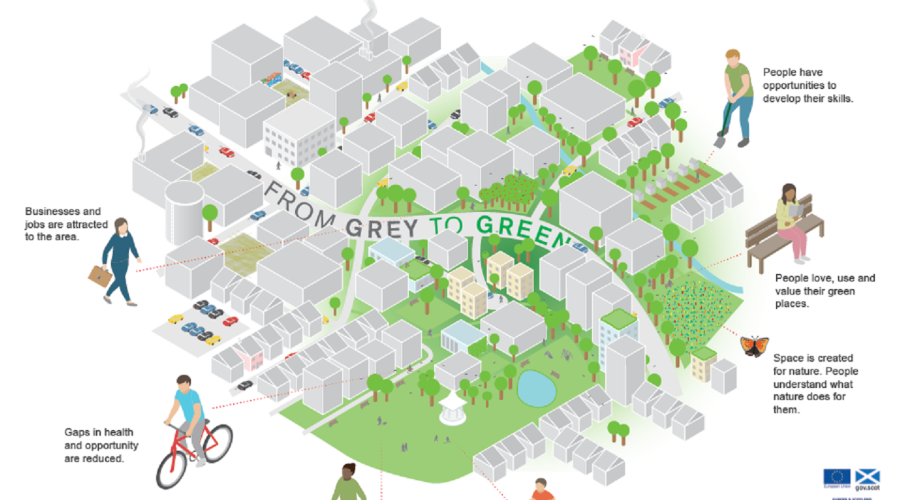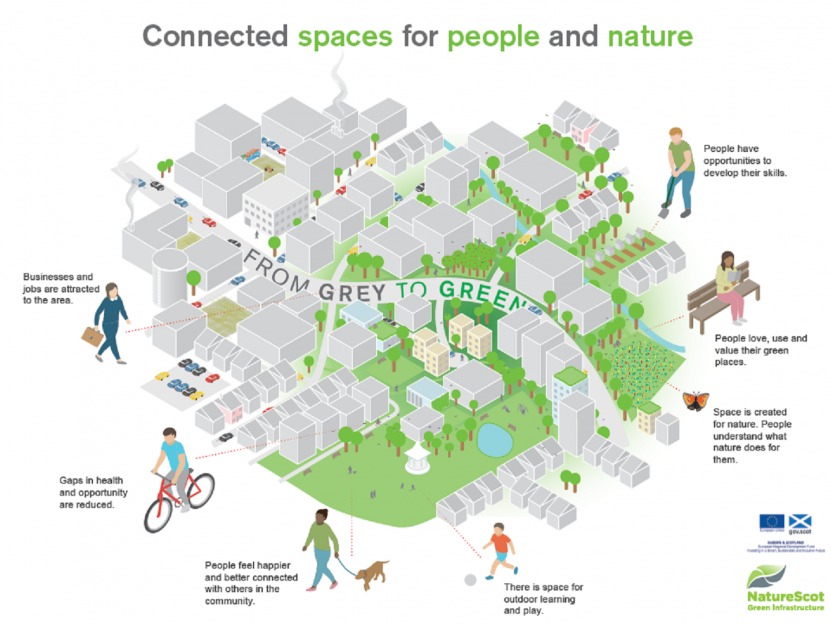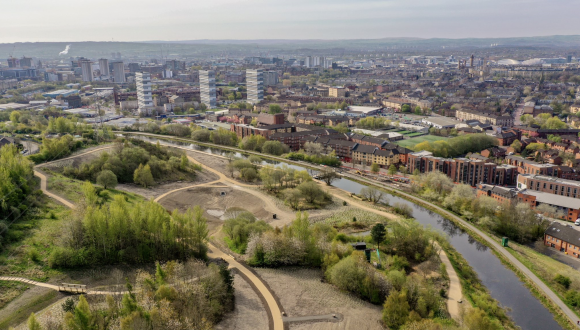
From urban grey to urban green
23 September 2020
It is doubtful if, in the wake of the Covid pandemic, that cities will ever be quite the same again. People across the urban landscape have enjoyed the benefits of good greenspaces and connecting with nature too much to give them up easily. For others the crisis has highlighted the fact that some areas don’t have good enough greenspace. The move from grey to green seems irreversible.
Cities have been facing a number of challenges over recent years. The coronavirus pandemic brought issues around our urban spaces into sharper focus.
There was much talking about creating 15 or 20 minute communities, where all essential needs could be accessed, by walking, in under a quarter of an hour. In Paris the mayor expressed a desire to see schools, workplaces, parks, food shops and health centres just a walk or a bike ride distance from home.
Melbourne, Australia, has seen call for a 20 minute variant on these aims – with the idea being to ‘live locally’. That’s been echoed in the UK by groups such as Sustrans. They are advocating wider pavements, more cycle parking, better greenspace and a return to children feeling it safe to walk or cycle to school.
Indeed the 20 minute theme popped up in the Scottish Government’s Programme for Government which proposed to ‘Work with local government to take forward ambitions for 20 minute neighbourhoods where people can live, work and learn in communities close to home.’
For our health and wellbeing, for tackling biodiversity loss, for our battle with climate change new look urban areas are surely the way forward.

People have opportunities to develop their skills. People love, use and value their green spaces. Space is created for nature. People understand what nature does for them. There is space for outdoor learning and play. People feel happier and better connected with others in the community. Gaps in health and opportunity are reduced. Businesses and jobs are attracted to the area.
Climate change is having a huge impact. Across Europe there has been concern about city temperatures, recently Paris endured a temperature of 42.6C – the warmest every temperature measured in the French capital. Some predict the Central Belt here will have London scale heatwaves by the end of the century.
Without air conditioning these kind of temperatures will be unbearable, but air conditioning merely adds to global warming. Buildings already use more than half of the worlds electricity in a battle to maintain optimum indoor temperatures. The horrible irony of controlling the heating in a building only to likely compromise it outside isn’t lost on many observers.
Another key post-coronavirus outcome looks like being how we use cities. City employees, especially those from the traditionally busy financial sectors, seem more likely to work from home in future. The pandemic has seen workers leave offices in droves, many of whom it seems will be allowed to work from home the majority of their time. This in turn will have a huge impact on the need for office space in cities. With many central city zones given over to offices what will this mean for these traditionally hectic zones? Will offices be converted to other purposes, including residential? Can the current cityscape be made more liveable?
Transport too fell under the spotlight. Urban metro and rail systems, even buses, suddenly became places where people felt exposed to greater risk of infection. Seen once as the saviour they were suddenly cast as potential sinners. At times during the pandemic these systems are often running at less than half their capacity. With increased home working will they ever reach their previous occupancy levels? Or will there be an increase in active travel along the pop-up routes, and will green infrastructure be incorporated into the permanent form?
Change was all around – perhaps except loose change. Even using cash became an activity that increasingly fell by the wayside. Paying by card, or at least digitally, became the preference of many businesses.
Carbon emissions did fall, and city centre air quality improved during the Covid-19 lockdown from the reduced use of fossil fuel. Whilst the latter may not be a permanent state of affairs, the images of clear skies overhead, and clear water in Venice showed that things can change environmentally for the better quickly. This is partly why phrases like ‘Green Recovery’ are becoming common currency.
Our Green Infrastructure Strategic Intervention contributes already to transforming our cities. Sites in Clydebank, Cardonald, Easterhouse and Cathkin show that an urban transformation can indeed create a better place to live, a more biodiverse rich space to relax or exercise in, a better route to commute along. Transforming our cities needn’t be an unrealistic quest, but a practical solution.
The plight of the planet, our biodiversity, our health and wellbeing is ours to fix. Transforming the grey to green could be one step along the way.







